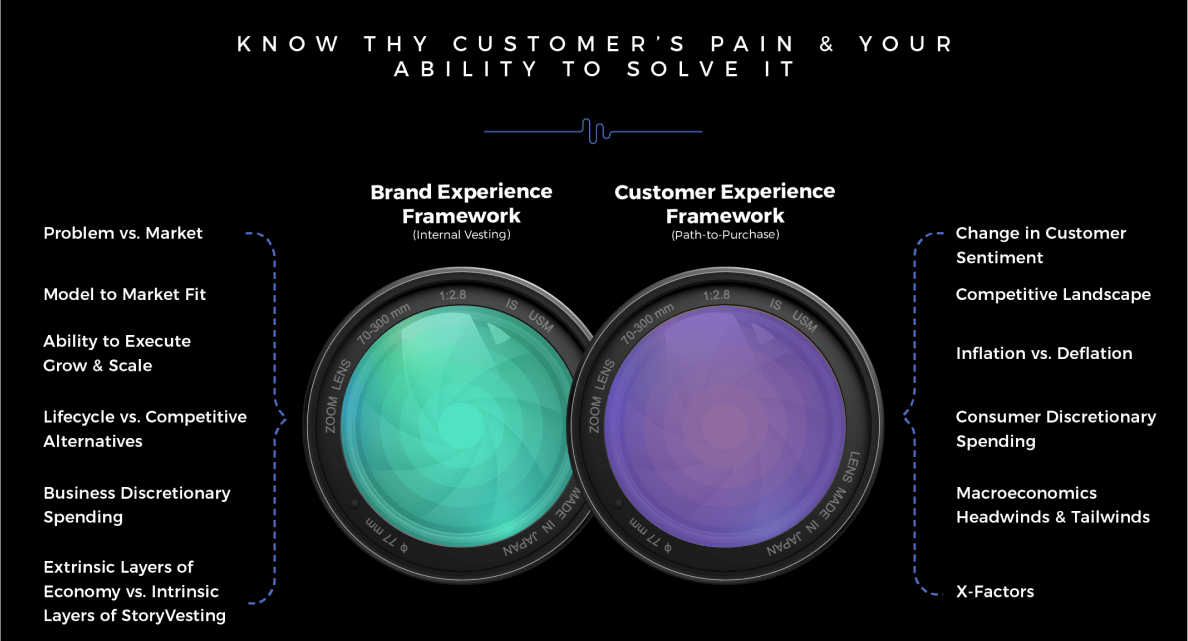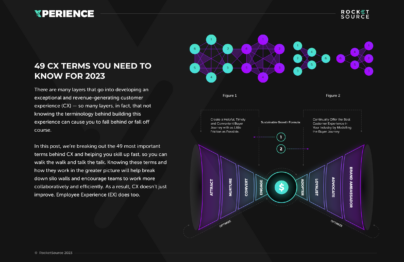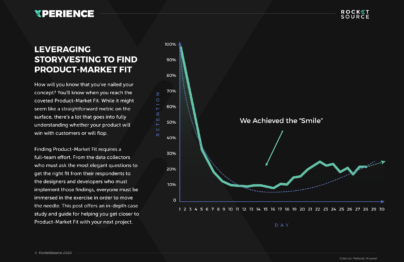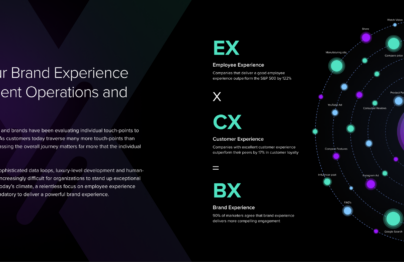Dirty data in, dirty data out. This strategy doesn’t describe how data is structured in columns or rows. Instead, it refers to how data is collected and mined and how insights are drawn from those data sets.
No matter how advanced predictive technology may be, where a team’s attention is focused, that’s where the energy will go. The data that garners regular attention is the data that will determine the trajectory of the company.
Clean data processes start with a holistic view of the customer and employee experiences, enabling teams to ask the right questions and uncover friction points that will lead to more intelligent insights and guided decision-making.

Data Collection Starts with
Asking the Right Questions
Data-backed decision-making starts with asking the right questions of your team or market. These answers ensure that organizations avoid getting dirty data in and thus having dirty data out because they drive closer to the motivational “why” of customers.
Organizations must operate from a customer-centric growth framework, like StoryVesting, to understand which questions to ask. This framework equips organizations to gather insightful data to monitor growth while looking at the holistic lifetime value of customers and employees.

Data Across the Bow Tie Funnel
Without the right data coming in, the data released out will be skewed, driving a business further away from finding solutions. This never-ending loop makes it immensely difficult to understand what’s happening across the entire bow tie funnel, which can hinder an organization’s growth.
The bow tie funnel allows companies to better understand which questions to ask and how to identify the root issues affecting the lifetime value of the customers. By peeling back these layers, organizations can better understand how the business and customer operates together and where there are opportunities for overall growth. In addition, organizations can assess how well-aligned the brand is with the market’s needs, wants and desires.


Reaching Intelligent Insights
Dirty data in, dirty data out is about more than just how the data is structured and accessed inside a database. It’s about measuring and collecting the metrics that will drive intelligent decision-making.
Growth is rooted in understanding retention metrics or the longevity of a customer and employee alike. When an organization has dirty data that doesn’t help them know why a customer stays or how long they stay, it will get dirty data that won’t honor the motivators and behaviors to spur the business’s longevity.
The why behind a customer or employee staying with an organization is the crux for any growth initiative. Having clean data in and getting clean data out is crucial to know why and identifying the motivational triggers that will lead to a value proposition.
Avoiding Dirty Data In, Dirty Data Out

Empathy Mapping
Empathy mapping is a key exercise for reducing friction points across the customer journey. It allows organizations to better understand their customer’s motivational triggers, which can help keep the data gathered and mined aligned with the overall organizational mission.

Tech Stack Review
The tech stack helps ensure that the data gathered is actionable. By reviewing platforms the organization relies on, teams can gather and analyze data that will build robust data loops and produce results by avoiding the trap of dirty data in, dirty data out.

Gap Analysis
Identifying areas of opportunity is just the first step. Running a gap analysis to ensure the organization is gathering the right data to avoid dirty data in, dirty data out, allows organizations to build maps that communicate a strong story and translate data into the needs of the organization, making the findings actionable instead of theoretical.
Customer Experience (CX) Terms
- 360° Degree View of the Customer
- AI Ops
- Barlow Bands
- Behavioral Triggers
- Bow Tie Funnel
- Brick-to-Click
- Business Impact Analysis (BIA)
- Cognitive Computing
- Cohort Analytics
- Content Mapping
- Conversational User Guidance
- Customer Data Profile
- Customer Experience (CX)
- Customer Friction
- Customer Insights Map
- Customer Journey
- Customer Journey Mapping
- Customer Satisfaction (CSAT)
- Customized Ratios
- CX Intelligence
- CX Led Growth
- CX Metrics
- Data as a Product (DaaP)
- Data as a Service (DaaS)
- Data Culture
- Data Driven
- Data Engineering
- Data Fabric
- Data Governance
- Data Humanization
- Data Hygiene
- Data Looping
- Data Mapping
- Data Mining
- Data Modeling
- Data Monetization
- Data Swamp
- Data Visualization
- Data Warehouse
- Data-Centric
- Descriptive Analytics
- Diagnostic Analytics
- Digital Asset Management (DAM)
- Digital Transformation
- Dirty Data In Dirty Data Out
- Embedded Intelligence
- Empathy Mapping
- Employee Data Profile
- Employee Experience (EX)
- EX to CX Data Mapping
- EX to CX Mapping
- Experience Management (XM)
- Gap Analysis
- Generative AI
- Human-Centered Design (HCD)
- Journey Analytics
- Machine Learning (ML)
- Managed Agile Services on Demand
- Modified Hoshin
- North Star Metric
- Party Data
- Pathway to Purchase
- Predictive Analytics
- Product-Market Fit Mapping
- Real Time Design Looping
- Revenue Acceleration
- RevOps
- S Curve of Growth
- Stack Impact Analysis
- StoryVesting
- Table Stakes Testing
- The 3 P’s
- User Experience (UX)
- User Insights Map
- User Interface (UI)
- Voice of the Customer (VoC)
- Voice of the Employee (VoE)
- World Cloud Generator Sentiment Mining
- X Analytics



